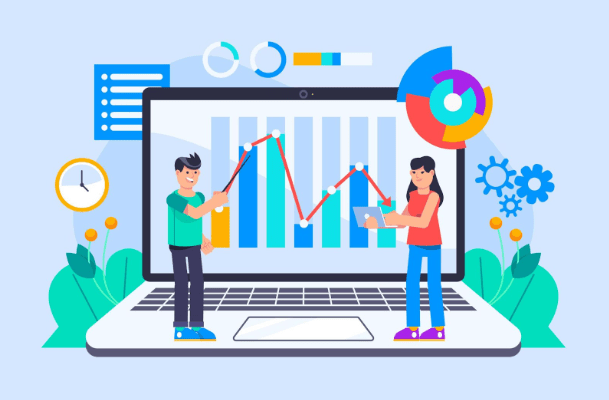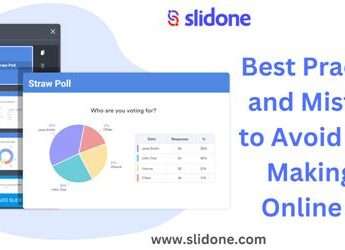Is it hard for you to convert your website visitors into customers? The key to success in the SaaS world is lead scoring. A systematic procedure for lead prioritization and ranking will assist you in focusing your energies on the leads that are most likely to buy. But what is the trick to lead scoring in SaaS for success?
This article discusses the various aspects of lead scoring and how this can transform your SaaS business. We will tackle everything from understanding various scoring models to successful lead nurturing practices.
Why lead scoring is important for SaaS businesses
Lead scoring is an inseparable part of a successful SaaS business. It will allow you to filter the wheat from chaff and pay more attention to leads that have a better chance of converting. However, without proper implementation of the lead scoring process you will waste valuable funds and time on prospects that have no real potential.
Lead scoring enables you to pinpoint prospects who are displaying buying indicators like page visits on the website, content engagements or other unique actions they make. This is achieved through ranking the leads by behavior and demographic data
On the one hand, lead scoring helps to overcome this gap between your marketing and sales departments providing such a common language for measuring leads. Therefore, the link between marketing and sales is established by defining what can be considered a qualified lead.
The components of a successful lead scoring model
In order to develop an appropriate lead scoring model, you must analyze behavioral and demographic data. Behavioral information describes what the lead does, such as visiting a website or downloading content. Conversely, demographic data involves the nature of company size or industry or job role.
In creating your lead scoring model, you should determine the important behaviors and characteristics that demonstrate a prospect’s level of involvement in an offer as well as their propensity to buy. For instance, a lead who has been on your pricing page several times and downloaded product demos is probably much more interested than an individual visiting the blog only once.
You should also give each action or attribute a different value based on its significance. Certain actions could have a greater significance than others, indicating the level of interest or intent to purchase is higher. When assigning scores and weights to different actions as well attributes you can build a scoring system which will reflect the value of each lead.
How to define and assign lead scores
The process of determining the criteria for lead scores might prove difficult, but it is important as a means to healthy outcomes any time you undertake your scoring efforts. First of all, you need to understand the difference between a “hot” lead and a “cold” one. This can be achieved by analyzing historical data and looking for patterns that suggest a lead’s conversion probability.
When you have identified your criteria, it is possible to score each action or attribute. For instance, visiting your pricing page might score 10 points while attending a webinar could be worth up to 20. By calculating scores for each lead action, you can rank the leads and spend more time on those with higher-value actions.
It is also advisable to frequently revise and adjust your lead scoring model. As your business grows and customer behavior shifts, it may be necessary to alter the scoring criteria. Since you constantly analyze the performance of your lead scoring attempts and make adjustments if needed, then the accuracy and effectiveness are also maintained due to this.
Best practices for lead scoring in the SaaS industry
The SaaS industry is unique; therefore, lead scoring for the sector needs to be personalized. Here are some best practices to keep in mind when implementing lead scoring for your SaaS business:
- Align scoring with customer lifecycle stages: Look at where a lead is in their customer’s journey and decide to adjust your scoring criteria based on that. A contact in the state of early awareness may have different behaviors and needs than a lead at decision-making stage.
- Use a combination of behavioral and demographic data: Demographic data is no less significant when demonstrating a lead’s level of engagement, but behavioral information can help assess their fit with your target market. Wrapping up both forms of data helps build a better lead scoring model.
- Continuously refine your scoring criteria: As you accumulate more information and develop a deeper understanding of your leads’ actions, modify the scoring process to better reflect their worth. Make a habit of revising and updating your scoring system to keep it efficient and mission-oriented.
- Integrate scoring with your CRM system: In order to realize the full potential of lead scoring, integrate it with your CRM platform. This makes it possible for your sales team to have access to lead scores and prioritize their outreach accordingly.
- Implement lead nurturing strategies: Lead scoring is only the first step in turning leads into customers. Utilize proven lead nurturing practices to better connect and inform your leads, giving them a higher chance of conversion.
Tools and software for implementing lead scoring
The introduction of lead scoring requires the use of tools and software to collect reliable information correctly. Here are some popular tools and software options to consider:
- Marketing automation platforms: Lead scoring is one of the many marketing automation tools offered by these platforms like HubSpot, Marketo and Pardot. Such leads management systems allow you to monitor and rank the leads depending on their reactions towards your offered campaigns.
- CRM systems: By integrating lead scoring functionality, Salesforce CRM provides you the ability to assign scores and follow up on leads across all platforms.
- Analytics tools: Google Analytics, Mixpanel and similar tools provide valuable information about user behavior allowing one to identify patterns or trends that can be considered when developing the lead scoring procedure.
- Data enrichment services: Services such as Clearbit and ZoomInfo also offer further demographic information to complement your lead profiles, enabling you to build more accurate scoring decisions.
Conclusion
One of the most effective tools SaaS business can use is lead scoring to identify and rank high-value leads. Using both behavioral as well as demographic data, you have the ability to assign scores on leads and then focus your energies where they most effectively convert. Effective lead scoring strategy will ensure that you enjoy a high return on investment, sustainable revenue growth and ultimately revolutionize your SaaS business.



